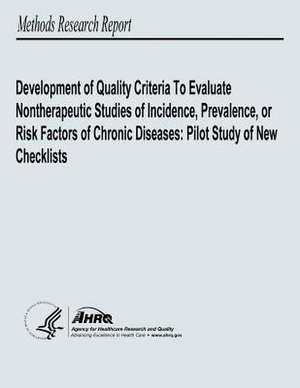Development of Quality Criteria to Evaluate Nontherapeutic Studies of Incidence, Prevalence, or Risk Factors of Chronic Diseases
Autor U. S. Department of Heal Human Services, Agency for Healthcare Resea And Qualityen Limba Engleză Paperback
Preț: 116.38 lei
Preț vechi: 122.50 lei
-5% Nou
Puncte Express: 175
Preț estimativ în valută:
22.27€ • 23.25$ • 18.43£
22.27€ • 23.25$ • 18.43£
Carte disponibilă
Livrare economică 14-28 martie
Preluare comenzi: 021 569.72.76
Specificații
ISBN-13: 9781484950456
ISBN-10: 1484950453
Pagini: 84
Dimensiuni: 216 x 280 x 4 mm
Greutate: 0.22 kg
Editura: CREATESPACE
ISBN-10: 1484950453
Pagini: 84
Dimensiuni: 216 x 280 x 4 mm
Greutate: 0.22 kg
Editura: CREATESPACE
